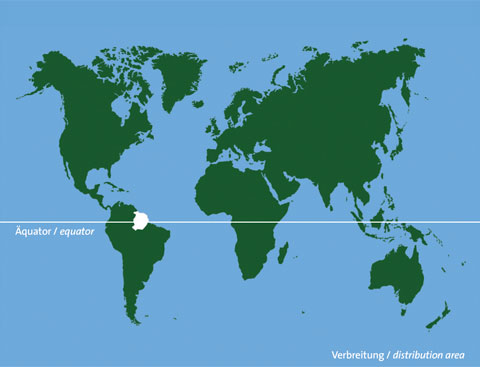Did you know?
The male white-faced sakis in their black fur and white faces (hence, their name!) differ significantly from the grey-brown females. They live in groups and have a wide communication repertoire. Often, the animals move bouncing on their hind legs. Since they are able to jump more than 10 metres at a time they are also called flying monkeys in their indigenous region.
European Endangered species Program
This animal is managed by the European Association of Zoos and Aquaria (EAZA) under the European Endangered species Program.

Characteristics
| Classification | Order primates, family saki monkeys |
|---|---|
| Diet | Fruit, seeds, nuts, buds, blossoms, insects, birds and bats |
| Habitat | Inhabit trees of tropical rainforests and mountain forests |
| Reproduction | Mating all year round; gestation time: 163–176 days, one young, independence at 7–8 months; maximum age: above 31 years |
Status according to Red List
More information you will get on the web page of the IUCN Red List.







